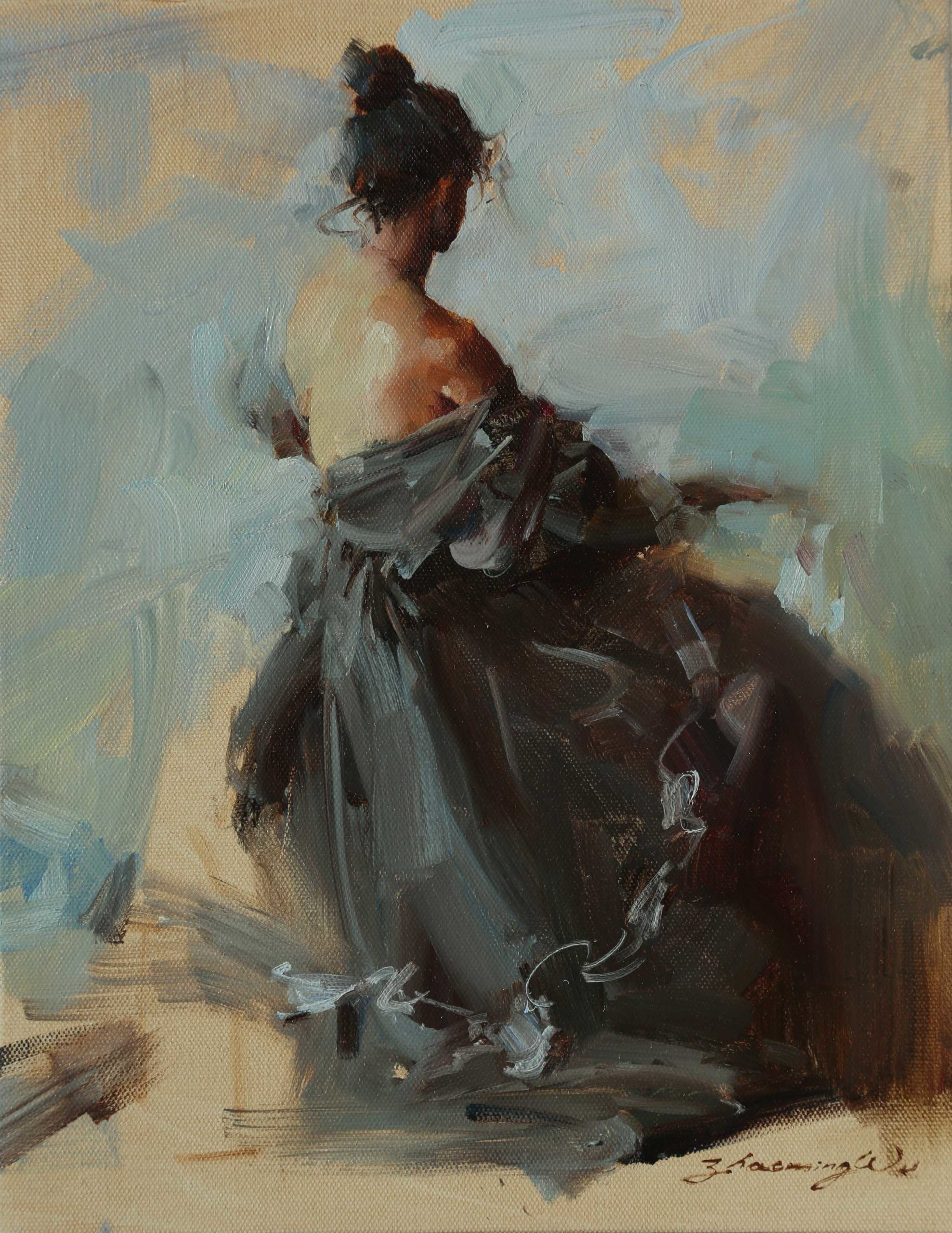Discover the most effective Tips for Creating Stunning Figurative Oil Painting Artwork
Wiki Article
The Role of Feeling and Expression in Figurative Oil Painting: A Thorough Analysis of Topic and Composition
The interaction of emotion and expression in figurative oil paint offers as a crucial lens via which one can analyze the detailed relationship between subject matter and composition. Artists harness numerous techniques, from shade selection to brushstroke characteristics, to cultivate psychological resonance within their works.Comprehending Feeling in Art
Feeling in art functions as an effective conduit for expression, permitting musicians to share complicated sensations via their work. In metaphorical oil painting, this psychological deepness is typically depicted through the depiction of the human number, recording the subtleties of human experience. The option of subject, color palette, and brushwork all add to the emotional vibration of a piece.Artists frequently bring into play individual experiences, social issues, or universal styles to stimulate feelings in the visitor. For example, a portrait may show vulnerability, while a vibrant number in activity can signify flexibility or turmoil. These psychological strings connect the viewer to the art work, promoting a dialogue that goes beyond the aesthetic tool.
Moreover, the interplay between light and shadow can enhance emotional intensity, leading the visitor's stare and attracting interest to specific elements within the structure. Making use of structure in oil paint additionally includes layers of complexity, welcoming a responsive reaction that enhances the emotional experience. Generally, comprehending emotion in art is vital for valuing the nuances that identify metaphorical oil painting, as it transforms mere representation into an extensive expedition of the human problem.
Key Elements of Make-up
In the world of figurative oil painting, the structure acts as the underlying framework that arranges visual components and enhances the emotional narrative. Essential parts of make-up consist of balance, comparison, focal factor, and rhythm, each adding to the total effect of the artwork.Equilibrium refers to the circulation of aesthetic weight within the painting, which can be attained with balanced or unbalanced arrangements. A healthy make-up supplies stability, enabling the audience to engage with the piece sympathetically - figurative oil painting. Contrast, on the various other hand, involves juxtaposing various aspects, such as light and dark or cozy and trendy colors, to lead the visitor's eye and stimulate emotional reactions
The focal point is critical, as it routes attention to the most considerable component of the paint, usually highlighting the emotional core of the story. By masterfully incorporating these vital elements, musicians can craft compelling and mentally resonant metaphorical oil paints that captivate and involve their target market.
Subject and Its Effect
Subject matter plays a crucial role in figurative oil painting, as it not just functions as the structure for the story yet additionally forms the visitor's analysis and psychological interaction with the art work. The selection of subject-- be it a singular number, a team dynamic, or a thematic representation-- directly influences the psychological ambience conveyed to the audience.
For circumstances, portraits commonly stimulate individual connections, disclosing the ins and outs of human expression and character, while scenes portraying public activities can create a feeling of belonging or nostalgia. The historical and social context helpful hints of the subject matter enhances the viewer's understanding, triggering much deeper representations on social norms, values, and the human condition.
Various subject matters also generate differing levels of interaction; a remarkable problem depicted via figures in tension might evoke feelings of anxiety or compassion, while peaceful landscapes can conjure up harmony and reflection. Inevitably, the impact of subject matter in figurative oil paint is extensive, as it functions as a channel for psychological resonance, directing the viewer's response and analysis, and promoting a connection in between the onlooker and the art work. This interplay is necessary for the effective interaction of the artist's intent.
Strategies for Evoking Sensations
The effectiveness of figurative oil painting in communicating emotions is substantially influenced by the techniques utilized by the musician. Among one of the most essential approaches is making use of shade concept, where the critical choice of hues can stimulate specific emotional feedbacks. Cozy shades, such as oranges and reds, usually elicit feelings of enthusiasm or aggression, while cooler tones like blues and environment-friendlies tend to stimulate calmness or unhappiness.Another necessary method is the adjustment of light and shadow, referred to as chiaroscuro. This method boosts the three-dimensionality of figures, developing remarkable contrasts that can heighten emotional deepness. The positioning of light can lead customers' emotions, highlighting particular components of the make-up.
Brushwork additionally plays a critical duty; loose, expressive strokes can convey energy and spontaneity, whereas smoother techniques may recommend tranquility or accuracy. The plan of topics within the composition can affect emotional effect. Close proximity can suggest intimacy, while distance might indicate isolation.
Ultimately, the mix of these methods allows musicians to craft stories that resonate with the customer, changing a simple aesthetic experience right into an expressive psychological trip. - figurative oil painting

Study of Noteworthy Works
Taking a look at remarkable works of figurative oil paint discloses exactly how different methods are employed to evoke effective emotions. One exemplary case is Edvard Munch's "The Scream," where the altered figure and swirling background communicate existential fear. Munch's use color-- brilliant oranges and deep blues-- heightens the psychological effect, showcasing how palette choices can form customer experience.One more significant job is Pablo Picasso's "Les Demoiselles d'Avignon." Right here, fragmented types and strong brushstrokes reflect a turbulent emotional landscape, testing traditional depictions of the women number. Picasso's cutting-edge composition not only catches the audience's focus however additionally invites consideration on themes of identity and sexuality.
Furthermore, Frida Kahlo's "The Two Fridas" provides an emotional exploration of duality and self-identity. The contrasting numbers, connected by a shared heart, exhibit Kahlo's emotional depth and individual story. figurative oil painting. Her precise attention to try this out detail and symbolic find more elements serve to involve audiences on a visceral degree
These situation studies emphasize the profound connection between feeling and structure in figurative oil paint, exposing how musicians harness strategy to communicate intricate sensations and stories that resonate across time and culture.

Conclusion
In final thought, the interaction of feeling and expression in metaphorical oil paint substantially improves the viewer's experience and analysis of the artwork. With a cautious option of subject matter and compositional strategies, musicians convey extensive narratives that resonate on both global and personal degrees. The application of color chiaroscuro, theory, and brushwork additional amplifies psychological deepness, changing each canvas into an effective reflection of the complexities of the human experience.In metaphorical oil painting, this emotional deepness is commonly represented through the depiction of the human number, recording the nuances of human experience.Furthermore, the interaction between light and darkness can intensify psychological intensity, directing the audience's stare and attracting attention to particular aspects within the make-up. The usage of appearance in oil paint further adds layers of complexity, inviting a tactile reaction that improves the emotional experience.The focal point is crucial, as it directs interest to the most considerable component of the paint, commonly highlighting the psychological core of the story. Inevitably, the influence of subject issue in metaphorical oil paint is profound, as it serves as a conduit for emotional resonance, directing the audience's response and interpretation, and fostering a link in between the observer and the artwork.
Report this wiki page